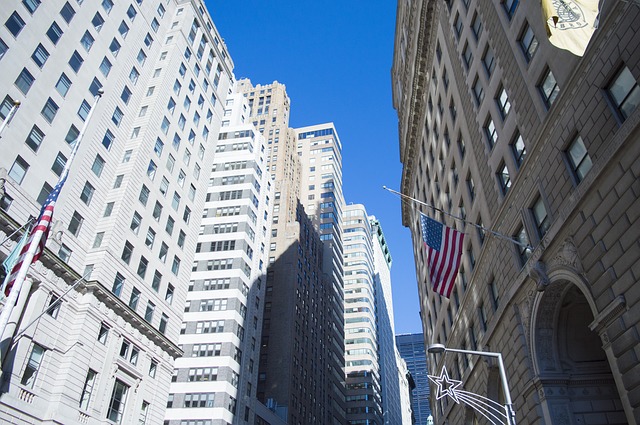ASI: Dot plot wijst op eensgezindheid binnen Fed
ASI: Dot plot wijst op eensgezindheid binnen Fed

Hieronder vindt u het commentaar van James McCann, econoom bij vermogensbeheerder Aberdeen Standards Investments, op de Fed-vergadering die gisteren plaatsvond.
‘The Fed surprised no one today, by leaving rates unchanged and providing a strong signal that they are on hold for the time being. It has set the bar relatively high for further policy easing next year, flagging the need for a material reassessment in the economic outlook to deliver further cuts. However, it has arguably set an even higher requirement for rate hikes, with Powell demanding a significant other and persistent increase in inflation in order to justify tighter policy.’
James McCann - Senior Global Economist, Aberdeen Standard Investments
Powell sticks to the script. As widely expected the Fed left interest rates unchanged (1.5-1.75%), highlighting that current policy settings are 'appropriate'. This message is consistent with that delivered in October, with the Fed on hold for the time being as it assesses how the economy responds to rate cuts earlier this year. On this front, Powell reiterated that the FOMC is prepared to act should conditions deteriorate, but underlined that a material reassessment of the outlook would be required to prompt action.
Updated dot plot shows a united committee – for now. There was no dissent at today’s meeting, and more significantly, a striking majority within the FOMC – 13 out of 17 - forecast unchanged interest rates next year in the updated dot plot. This chimes with recent commentary from the FOMC, which has tended to support the case for a pause presented by Chair Powell back in October. Committee members seem pretty happy to sit on their hands for the time being.
However, this consensus fades as we move into 2021 and 2022. The median expectation is for one hike in each year, although individual views on rates range between 1.6% and 2.9% by the end of the forecast horizon. Uncertainty is always higher as we move further out, so we need to take these signals with a pinch of salt. Instead, they might tell us most about how the FOMC’s views on neutral rates are evolving. The median FOMC member pegs the neutral rate at 2.5%, down from 3% in September last year, with the recent failed experiment with policy tightening having seemingly made policymakers more pessimistic over the interest rate that the economy can live with. Interestingly, most FOMC members expect rates to sit below their reduced view of neutral in 2022, potentially reflecting a healthy desire to put less weight on these benchmarks.
Based on a goldilocks outlook. The Fed’s views on the economic outlook were broadly unchanged. It continues to expect growth to slow slightly from 2.2% this year to 2% in late 2020, 1.9% in 2021 and 1.8% in 2022. Through this period the unemployment rate is forecast to remain broadly stable and comfortably below the Fed’s view of the natural rate (4.1% – although this also continues to drift lower). Interestingly, this is not expected to feed through to any significant pick-up in inflation. Indeed, core PCE is forecast to remain fractionally below target next year at 1.9%, before reaching 2% over the rest of the forecast horizon. Sounds too good to be true.
Fed to come back to the table. We continue to expect a more pronounced slowdown in US growth to prompt one final cut from the Fed. Corporate sentiment sits at depressed levels alongside rising margin pressure, high leverage, heightened policy uncertainty and tightening bank lending standards. Consumer spending meanwhile has shown signs of slowing this year and is expected to moderate further as real income growth cools – although the unexpected recent strength of the labour market does cast some doubt on this forecast. Finally, the boost from tax cuts and higher government spending is set to fade entirely as we move into 2020. This should deliver a slowdown in growth to 1.4% by the end of 2020, which should meet the bar set by the Fed for renewed action.
Learning from past errors. Powell in fact spent much of the press conference talking about the inflation process and why it might be hard to get a significant acceleration in price pressures. He explored a range of reasons why inflation has been weak, ranging from spare capacity in the labour market, to a flat Philips Curve, to lower inflation expectations. Against this backdrop Powell highlighted that the Fed needed to be humble with regards to its inflation forecasts, suggesting a desire to see stronger inflation become established in the economy before tightening, rather than adjusting policy on account of higher inflation forecasts – as again might have been the case in the past.
Some hints around the Fed policy review. Otherwise, we continue to see increased focus on the Fed’s ongoing policy review in Powell’s press conferences. Perhaps the most important signal was that any change in the Fed’s framework would need to be backed up with policy action to make it credible. We have flagged this as one of the key waymarks with which to judge the likely efficacy of any new approach to the inflation target. This desire to win credibility early is encouraging.
